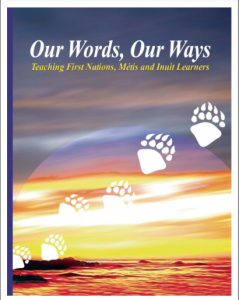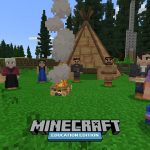Our Words, Our Ways: Teaching First Nations, Metis and Inuit learners is a resource guide put out by Alberta Education. It is a bit dated (2005) but one of the main things that drew me to this resource was that it was created to support how Aboriginal students learn as well as a variety of strategies to help with lesson planning. As I am looking for ways to support bringing in western and traditional ways together through place based learning, I thought this resource would be helpful. Within the resource you can find information about Aboriginal cultures, history, perspectives, strategies such as rubrics and ideas to help support teachers in meeting the needs of Aboriginal students when they are planning for their lessons. Aboriginal Elders, teachers and psychologists as well as other members of Alberta’s Aboriginal communities helped to contribute to the making of this resource guide and it is aimed to support administrators, teachers, school staff, counselors and even liaison workers.
Access to the pdf document: https://education.alberta.ca/media/3615876/our-words-our-ways.pdf

Alberta Education. (2005). Our Words, Our Ways: Teaching First Nations, Metis and Inuit learners. Alberta Education. Aboriginal Services Branch and Learning and Teaching Resources Branch.

